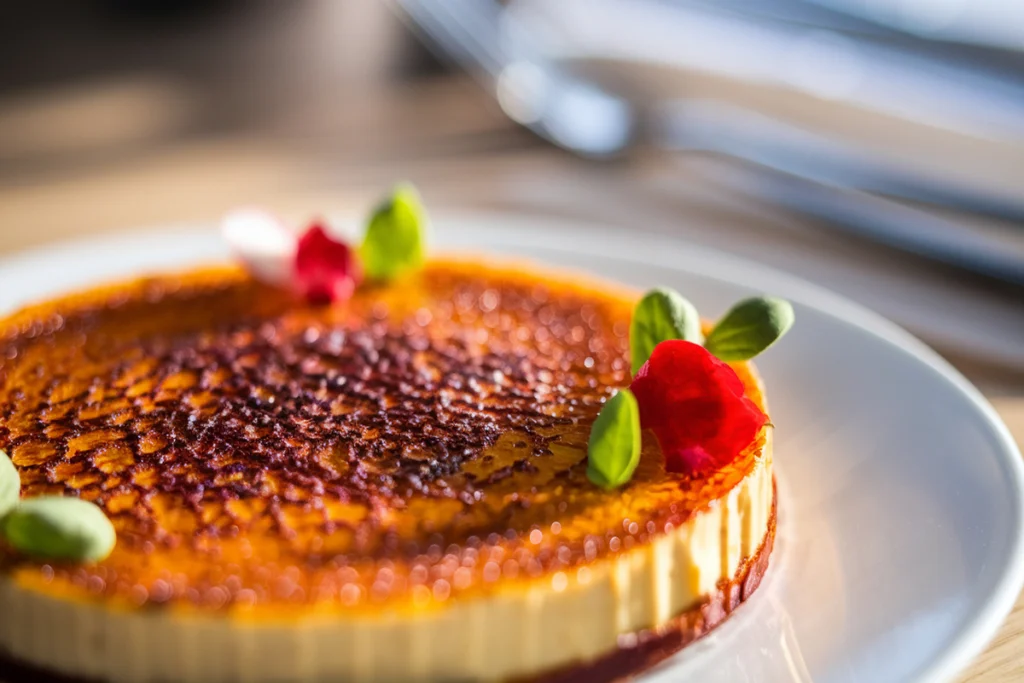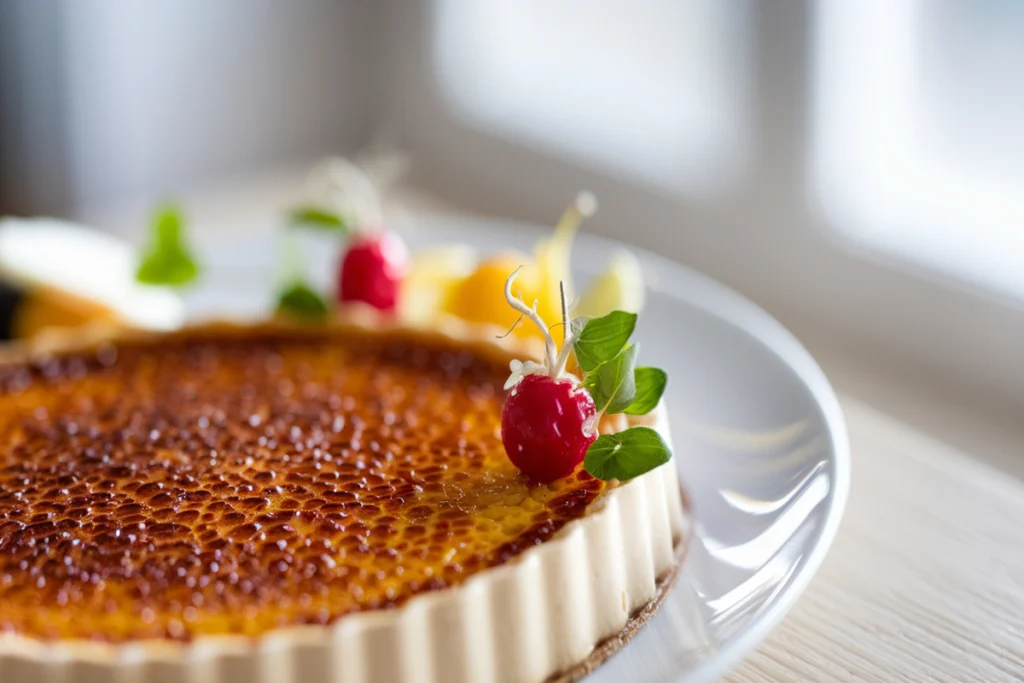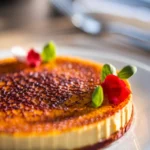Table of Contents: Do you have to use ramekins for crème brûlée?
Introduction: Do you have to use ramekins for crème brûlée?
Picture this: a velvety, caramelized dessert that cracks under your spoon to reveal a silky custard beneath. Crème brûlée is the epitome of elegance—creamy, luxurious, and ridiculously simple to make. But here’s the burning question: Do you have to use ramekins for crème brûlée? Spoiler: Nope! While these little ceramic dishes are iconic, they’re not your only option.
Legend has it that crème brûlée was almost called “burnt cream” (thanks to its caramelized sugar topping) until a French chef decided “crème brûlée” sounded fancier. And honestly, who can blame them? This dessert is meant to impress. But here’s the kicker: You don’t need fancy tools or a Michelin-star kitchen to pull it off. Think of it as the sophisticated cousin of our viral No-Bake Chocolate Mousse—equally decadent but with a crispy sugar shell that’ll make you feel like a pastry pro. Ready to ditch the ramekin rulebook? Let’s dive in!
What is Crème Brûlée?
Crème brûlée—French for “burnt cream”—sounds intimidating, right? But let’s be real: It’s basically custard with a sugar hat. Why the fancy name? Blame the 17th-century French chefs who wanted to elevate dessert (and maybe their egos). The real magic lies in that glass-like caramelized topping. Crack it with a spoon, and you’re greeted by a silky vanilla-infused custard.
Fun fact: Some say the dish was invented by accident when a chef forgot sugar on a custard… and then torched it. Who knew kitchen mishaps could taste so divine? As the saying goes, “The way to a man’s heart is through his stomach,” but crème brûlée might just be the shortcut. Ready to skip the ramekins and make this showstopper your way? Let’s go!
Why You’ll Love This Crème Brûlée Recipe

- No-Ramekin Revolution: Forget hunting for specialty dishes! We’ll show you how to use everyday kitchen items (think: mugs, jars, or even a pie dish) to nail this dessert.
- Budget-Friendly Brilliance: Skip the $10 restaurant slice. This recipe costs pennies per serving and uses pantry staples like eggs, cream, and sugar.
- Customizable & Crowd-Pleasing: Add citrus zest, espresso powder, or lavender to the custard. Top with turbinado sugar, honey, or even crushed candies for that signature crack.
If you loved our Easy Chocolate Pots de Crème, you’ll adore this recipe. Both are creamy, dreamy, and guaranteed to make you the star of dessert night. Ready to torch your way to glory? Let’s bake!
How to Make Crème Brûlée (Without Ramekins!)
Quick Overview:
This recipe is foolproof: 6 ingredients, 15 minutes of prep, and a luxe result. The secret? A water bath for creamy texture and a kitchen torch (or broiler) for that caramelized crunch.
Key Ingredients (Serves 6):
- 2 cups heavy cream
- 5 egg yolks
- 1/2 cup granulated sugar + extra for topping
- 1 tsp vanilla extract
- Pinch of salt
- Hot water (for the baking dish)
Step-by-Step Instructions:
- Prep the Custard: Whisk egg yolks, sugar, and vanilla until smooth. Heat cream until steaming (not boiling!), then slowly pour into the egg mixture while whisking.
- Bake Smart: Pour the custard into your chosen dish(es). Place them in a deep pan, fill the pan with hot water halfway up the sides, and bake at 325°F for 30–40 minutes until set but jiggly.
- Caramelize Like a Pro: Chill for 2 hours, sprinkle with sugar, and torch (or broil) until golden. Wait 5 minutes before serving—patience pays!
5 Ramekin Alternatives:
- Coffee mugs
- Mason jars
- Oven-safe bowls
- A shallow pie dish (family-style!)
- Silicone muffin molds
What to Serve With Crème Brûlée
- Light Bites: Pair with fresh berries or almond biscotti for contrast.
- Coffee or Tea: Espresso or Earl Grey balance the sweetness.
- Dessert Wines: Try a late-harvest Riesling or Moscato.
Top Tips for Perfecting Crème Brûlée
- Avoid Curdling: Temper the eggs slowly with hot cream.
- Sugar Swap: Use brown sugar or coconut sugar for a deeper flavor.
- No Torch? No Problem: Use your oven’s broiler for 1–2 minutes (watch closely!).
Storing and Reheating Tips
- Fridge: Store custard (without sugar topping) for up to 3 days. Add sugar and torch before serving.
- Freeze: Not recommended—texture suffers.
FAQs: Do you have to use ramekins for crème brûlée?

Q: Do you have to use ramekins for crème brûlée?
A: Not at all! Coffee mugs, mason jars, or even a pie dish work beautifully. Get creative!
Q: What if I don’t own a kitchen torch?
A: Your oven’s broiler is a great backup—just keep a close eye to avoid over-browning.
Q: Can I make this dairy-free or vegan?
A: Yes! Swap heavy cream with coconut cream and use a vegan sugar for topping.
Q: How do I prevent the custard from curdling?
A: Temper the eggs slowly with hot cream and avoid high heat. Low and steady wins the race!
Q: Can I prep crème brûlée ahead of time?
A: Absolutely! Prep the custard 1–2 days in advance, but wait to caramelize the sugar until serving.
Conclusion: Break the Rules, Keep the Wow Factor
Crème brûlée is all about indulgence, not rigidity. Who says you need ramekins to master this classic? With a little ingenuity (and maybe a coffee mug or two), you can create a dessert that’s every bit as decadent as the French bistro version—minus the fuss.
Whether you’re hosting a dinner party or treating yourself, this recipe is your ticket to creamy, caramelized bliss. Remember: Cooking is about joy, not perfection. So torch that sugar with confidence, experiment with flavors, and don’t be afraid to make it your own.
Print
Crème Brûlée in Ramekins
- Total Time: 3 hrs
- Yield: 6 servings 1x
- Diet: Vegetarian
Description
Indulge in the timeless elegance of crème brûlée—silky vanilla custard crowned with a crackly caramelized sugar shell. This classic French dessert is surprisingly simple to master, and yes, ramekins do make it extra special! Perfect for date nights or impressing guests. 🍮✨
Ingredients
- 2 cups heavy cream
- 5 large egg yolks
- ½ cup granulated sugar (+ 6 tsp for topping)
- 1½ tsp pure vanilla extract
- Pinch of fine sea salt
Instructions
- Prep Custard Base:
- Preheat oven to 325°F (160°C).
- Whisk egg yolks, ½ cup sugar, vanilla, and salt until smooth.
- Heat cream in a saucepan until steaming (not boiling). Slowly pour into yolk mixture while whisking.
- Bake in Ramekins:
- Divide custard into 6 ramekins. Place them in a deep baking dish.
- Fill the dish with hot water until halfway up the ramekins. Bake 35–40 minutes until set but slightly jiggly.
- Chill & Caramelize:
- Refrigerate ramekins for 2+ hours. Before serving, sprinkle 1 tsp sugar over each.
- Torch until golden and bubbly. Let cool 5 minutes to harden.
Notes
- No Torch? Use the broiler for 1–2 minutes (watch closely!).
- Substitutions: Swap vanilla for orange zest or lavender.
- Storage: Keep chilled custard (without sugar topping) for up to 3 days.
- Prep Time: 15 mins
- Chilling Time: 2 hrs
- Cook Time: 40 mins
- Category: Dessert
- Method: Baked
- Cuisine: French
Nutrition
- Serving Size: 1
- Calories: 320
- Sugar: 22g
- Sodium: 35mg
- Fat: 25g
- Saturated Fat: 15g
- Unsaturated Fat: 8g
- Trans Fat: 0g
- Carbohydrates: 24g
- Fiber: 0g
- Protein: 4g
- Cholesterol: 220mg
Keywords: Crème brûlée in ramekins, classic French dessert, easy crème brûlée, baked custard

